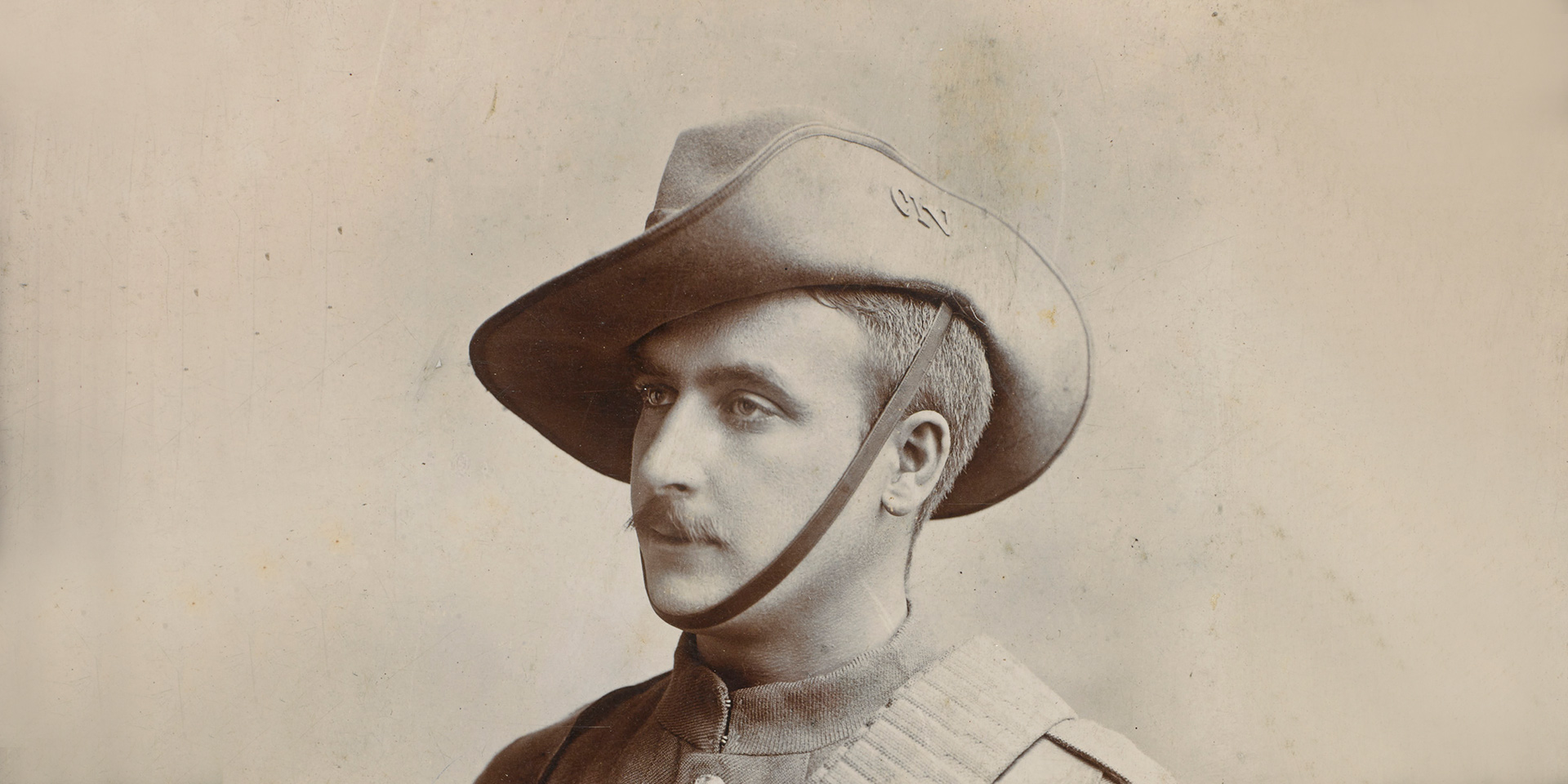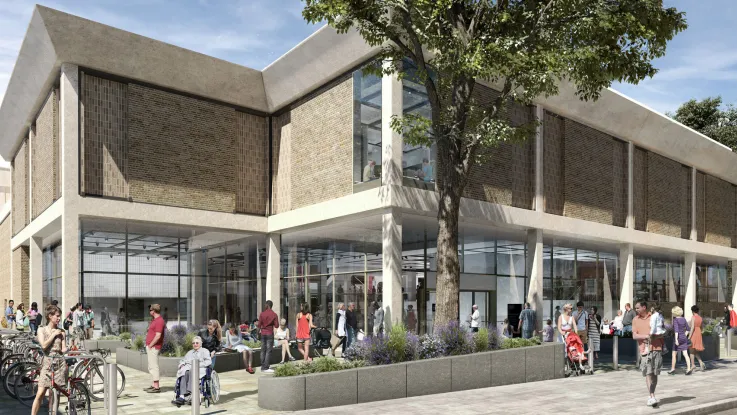East London soldier’s photographs capture life behind the lines on the Western Front
One hundred years ago between February and April 1918 Battery Quartermaster Sergeant Samuel Pye took a series of photographs of British soldiers that show how life on the Western Front was not always about death and destruction. His album reveals that amidst the horrors of war soldiers could still have fun.
A typical infantry soldier was only in the front-line trenches for about a third of his total time overseas. Libraries, canteens, churches, social clubs, baths, concerts and many other facilities were established so soldiers could relax. The Army ran most of these, but charities, volunteers and religious groups operated others. Units also organized their own entertainment – as was the case with Pye’s corps.
One of the most popular pastimes was the concert party, which was usually free for soldiers to attend. The shows were typically held in makeshift venues and featured props and costumes made from discarded materials. Sometimes these featured professional artists, but more often included serving soldiers. The concerts usually featured soldiers as singers, actors and comedians.
Some men regularly appeared as women in various productions, highlighting how some soldiers specialised as female impersonators for these concert parties. Historians have since debated whether this cross-dressing was a humorous rejection of traditional male gender roles, or provided a surrogate woman for soldier audiences pining for sweethearts at home.
By 1917, each division had at least one military theatre company but the assembling of a cast was a constant problem. It was difficult to maintain a permanent staff due to the movement of units or cast members being killed or wounded in action. The list of actors and staff for each show photographed in Pye’s album continuously changes over the three-month period it covers.
Some talented soldiers were lucky enough to be released from their units to work full time in official military concert parties formed by the Army to entertain its men. Some soldier-made shows became so successful that they left the Western Front and entertained audiences at home. 'The Dumbells' of the Canadian Army even managed a run in London’s West End. Nevertheless, most of the soldiers’ concert parties were less sophisticated and remained at the front.
The entertainment they provided broke up the monotony of Army life, offered a distraction from the horrors of war and kept soldiers occupied and out of trouble when not on duty. The concert parties also provided a safety outlet for frustration in the British Army and gave the cast a platform on which to air grievances about food, conditions and senior officers. They reinforced group identity by bridging the gap between officers and men, who often had little else in common, and made soldiers ready to serve a common cause.
Dr Matthew Thomas, Online Content Curator at the National Army Museum, says:
'The photographs taken by Samuel Pye show how life beyond the front line was not all work and no play, that soldiers found ways to have fun, provide entertainment and boost morale. They capture a common aspect of a soldier’s life that is largely unknown or forgotten.'
Notes to Editors:
For more information, please contact the National Army Museum press office at pr@nam.ac.uk or 020 7881 2433.
About Battery Quartermaster Sergeant Samuel Pye
Samuel James Pye (1876-1939) was born on 4 August 1876 at Old Ford in Bow, London. On 13 November 1892, he enlisted with the 1st Essex Royal Garrison Artillery Volunteers at Barking in Essex.
In January 1900, Private Pye joined the City of London Imperial Volunteers and fought in South Africa in the Boer War (1899-1902) until November 1900. On his return to Britain, Pye was made a Freeman of the City of London for his services and remained with the 1st Essex Volunteers until March 1908 when he left the Army.
Pye re-enlisted in May 1915 and served with the 59th Divisional Ammunition Column, Royal Field Artillery (TF). After training this formation served in Ireland during the Easter Rising (1916) and deployed to the Western Front in the spring of 1917. It went on to fight at the Third Battle of Ypres (1917) and at Cambrai (1917), but suffered heavy losses during the German Spring Offensive (1918).
Pye survived these battles and was discharged from the service at Charlton in 15 July 1919. For his wartime contribution, he was awarded the Meritorious Service Medal. In later life he lived with his family in Stratford and died on 9 November 1939 at Queen Mary’s Hospital, Stratford.
National Army Museum
The National Army Museum is the leading authority on the history of the British Army. Founded in 1960 by Royal Charter and established for the purpose of collecting, preserving and exhibiting objects and records relating to the Land Forces of the British Crown it is a museum that moves, inspires, challenges, educates and entertains.
The Museum seeks to tell the story of the British Army, the personal experiences of the soldiers who have served in it and to connect the British public and its army demonstrating how the role of the army and its actions are still relevant today.
Heritage Lottery Fund
Thanks to National Lottery players, we invest money to help people across the UK explore, enjoy and protect the heritage they care about - from the archaeology under our feet to the historic parks and buildings we love, from precious memories and collections to rare wildlife.
For more information, please contact Katie Owen, HLF press office on Tel: (020) 7591 6036 out of hours mobile: 07973 613820.



